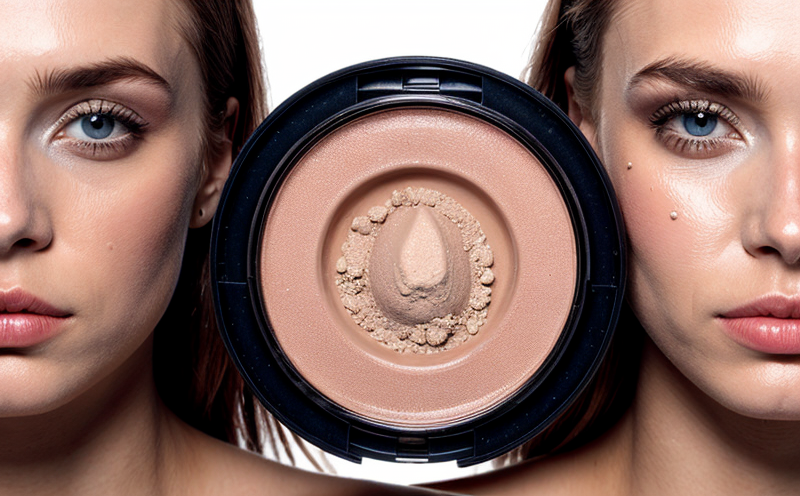AOAC 999.10 Heavy Metals in Cosmetics Testing
The AOAC International Method 999.10 is a widely recognized and robust analytical technique for determining the presence of heavy metals such as lead, cadmium, mercury, and arsenic in cosmetic products. This method is crucial for ensuring product safety and compliance with international standards, particularly those set by regulatory bodies like the U.S. Food and Drug Administration (FDA) and European Union (EU).
The test involves several key steps that ensure accurate measurement of heavy metals. Samples are typically digested using nitric acid to release heavy metals into a solution. This process is followed by flame or graphite furnace atomic absorption spectroscopy (AAS) for quantification. The method's precision and accuracy make it an indispensable tool in the quality control and safety assurance processes of cosmetic manufacturers.
Compliance with AOAC 999.10 can help companies avoid legal repercussions, safeguard brand reputation, and ensure consumer trust. This test is particularly important for products that come into direct contact with skin or mucous membranes, such as lipsticks, eye shadows, and facial moisturizers.
Regular testing ensures ongoing safety and helps manufacturers stay ahead of changing regulations. The method's sensitivity allows detection at very low concentrations, which is critical given the potential toxicity of heavy metals even in small amounts.
In addition to regulatory compliance, this test can also serve a broader purpose in product development. By identifying trace levels of heavy metals early in the production process, manufacturers can take corrective measures, ensuring that their products meet not only legal standards but also high ethical and safety benchmarks.
The AOAC 999.10 method is not just about compliance; it is a tool for quality assurance. It helps companies maintain transparency with consumers by providing them with confidence in the safety of their products. This can be particularly important in marketing strategies, where brands emphasize their commitment to responsible sourcing and production.
Given the global nature of the cosmetic industry, ensuring that all products meet local regulations is essential. AOAC 999.10 plays a pivotal role in this regard by providing consistent and reliable results across different regions.
Why It Matters
The presence of heavy metals in cosmetics can have serious health implications, including neurotoxicity, organ damage, and increased risk of cancer. Regulatory bodies worldwide impose strict limits on the levels of these contaminants to protect public health.
- Health Risks: Exposure to high levels of heavy metals like lead or cadmium can cause severe health issues ranging from neurological disorders to kidney damage.
- Regulatory Compliance: Non-compliance with heavy metal limits set by regulatory bodies can result in product recalls, fines, and reputational damage.
Benefits
- Avoids Legal Penalties: Ensures compliance with international standards and local regulations, avoiding potential legal issues.
- Enhances Brand Reputation: Demonstrates a commitment to product safety and quality, enhancing consumer trust and loyalty.
- Protects Consumer Health: Detects and mitigates the risk of harmful contaminants in cosmetic products.
Why Choose This Test
- High Precision: AOAC 999.10 ensures accurate and reliable results, critical for meeting regulatory standards.
- Global Recognition: Widely accepted by regulatory bodies worldwide, ensuring consistent compliance across markets.
The AOAC International Method 999.10 is a cornerstone in the quality assurance process of cosmetic products. Its rigorous methodology and international recognition make it an essential tool for manufacturers aiming to ensure product safety and compliance with global standards. By choosing this test, companies can safeguard their brand reputation and contribute to public health.





